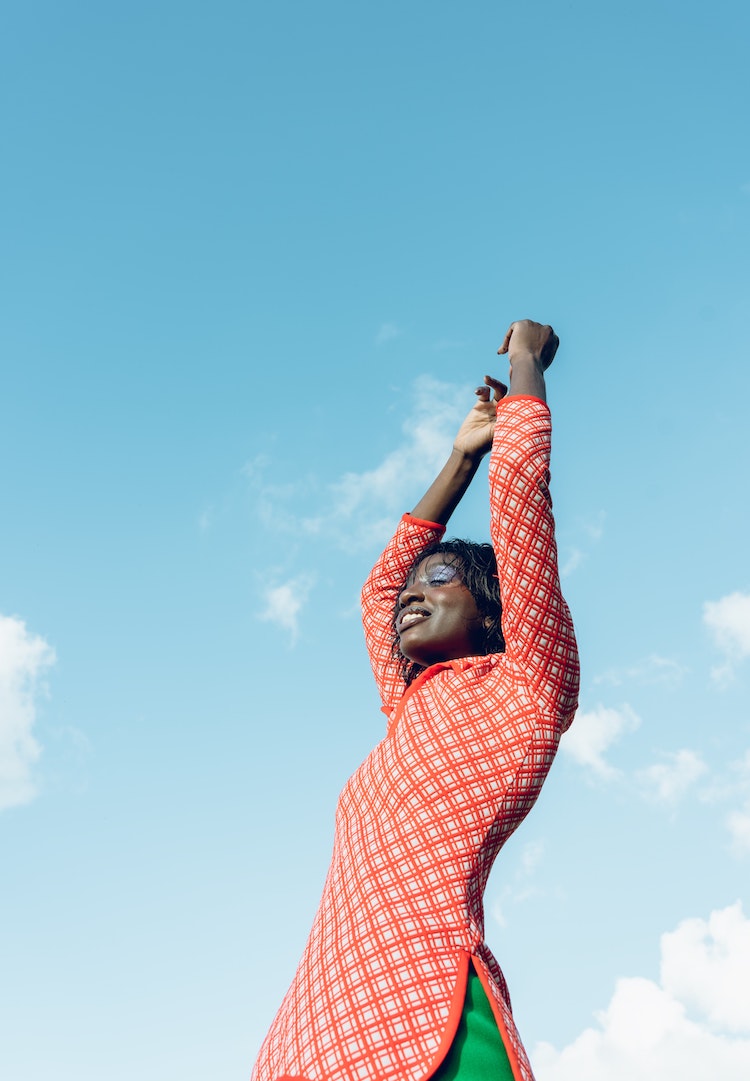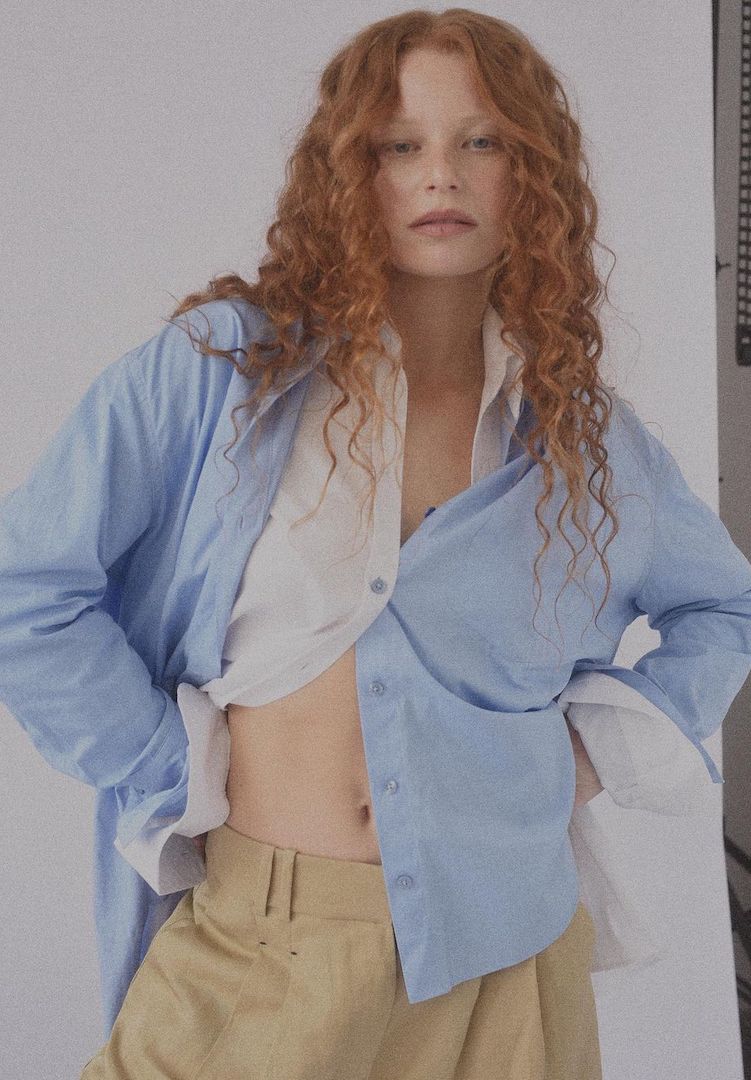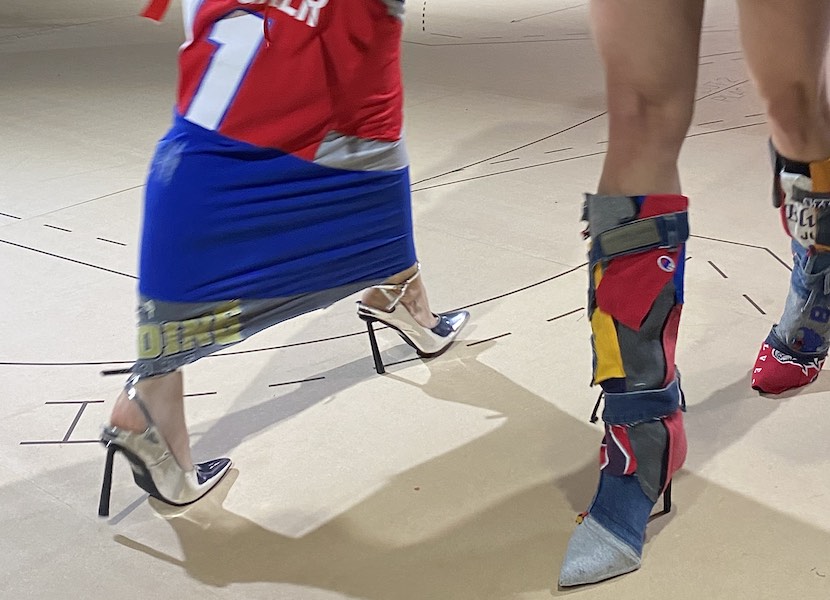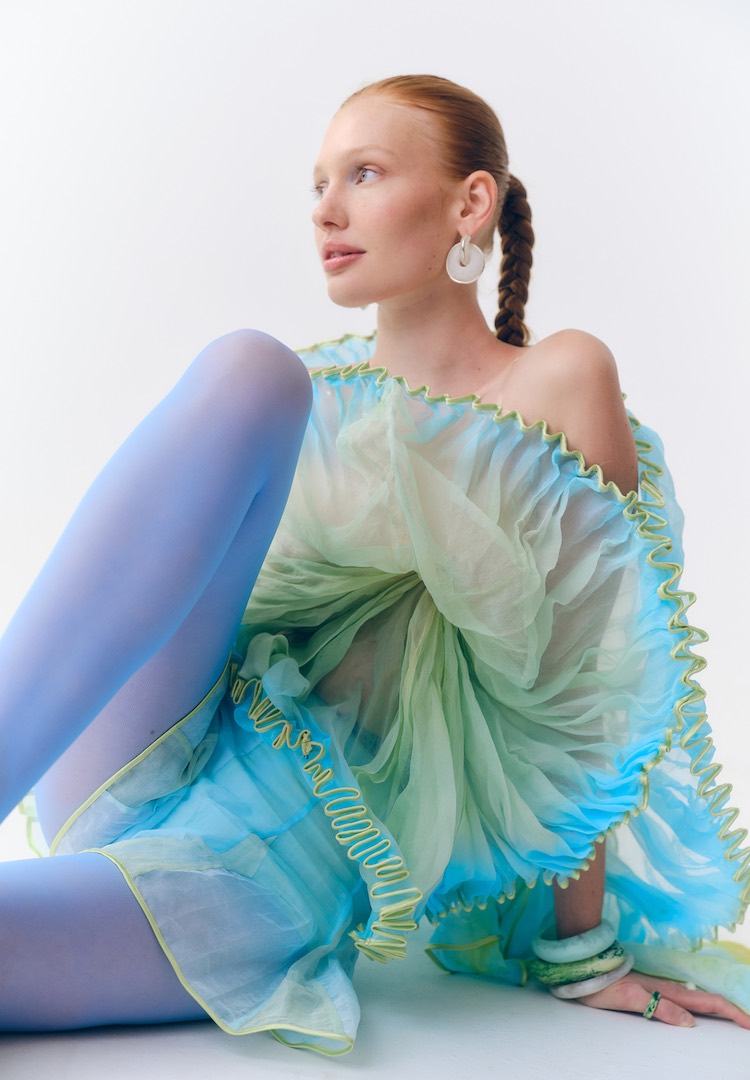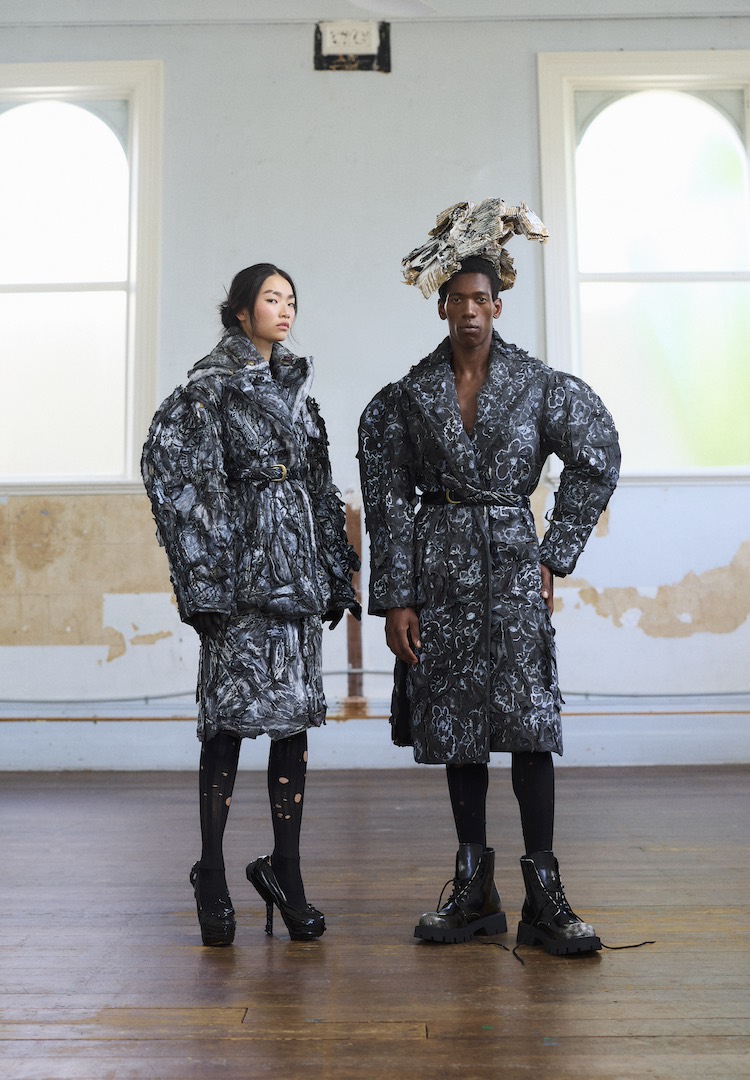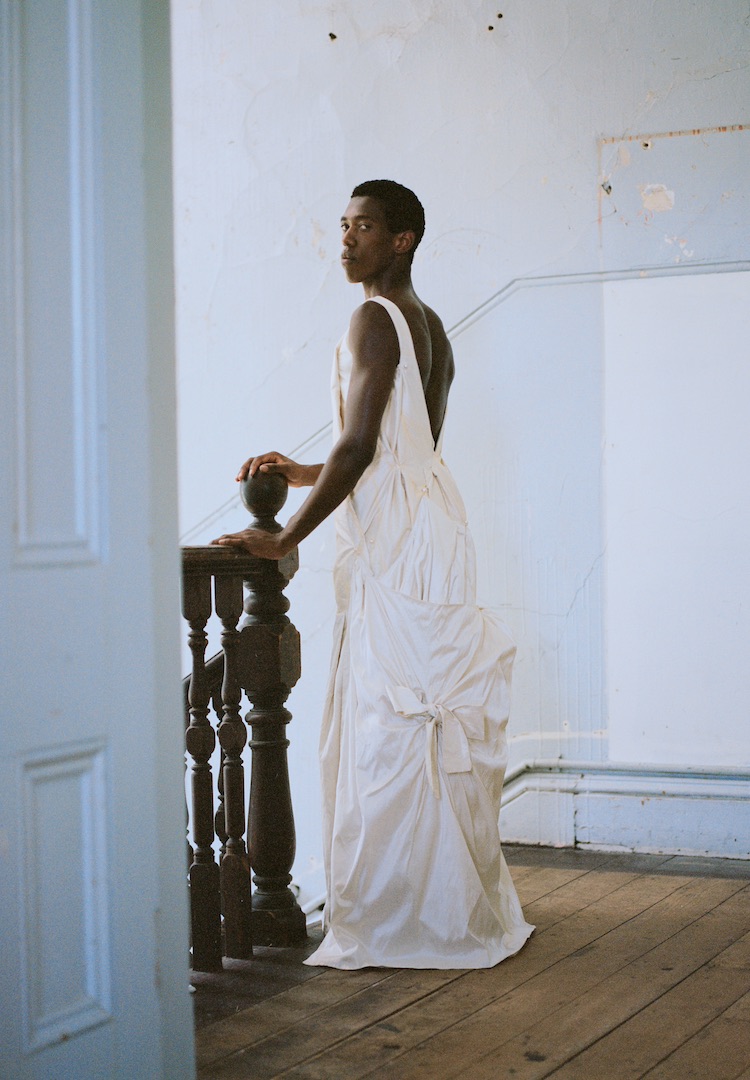As a stylist, here are my fashion highlights from the Melbourne student collections of 2022
WORDS AND PHOTOGRAPHY BY KATHERINE ROSE
“A show like this makes me cherish the emerging talent this city has to offer.”
As a freelance stylist working in Naarm (under the name RosePure), Melbourne Fashion Week’s (M/FW) Student Collections Runway is my favourite show to attend each year to discover emerging talent from our state’s best fashion schools.
My point of interest in styling is using local, up-and-coming designers – watching this show allows me to discover what they’ve been working on, see which collections I’d like to use in future work and take note of the designers I’d like to collaborate with in the future.
For more fashion news, shoots, articles and features, head to our Fashion section.
The students make their collections to industry standard but have fewer boundaries and the freedom to be as creative as possible; many new ideas and techniques are born from these collections. They’re not focused on wearability as such but act more as an art form through which the students can express themselves.
What I’m looking for when viewing this runway is a collection that includes interesting and unique textures, colours and fits, like odd asymmetrical shapes or cutouts to frame the body. I want there to be a distinct theme that carries through each piece. As a stylist, I’m looking to use a brand that has a recognisable aesthetic but I also want to be able to remove its pieces from their original context and integrate them with other themes, presenting them in a different way than the designer may have intended.
So in short, I’m looking for items that can be adaptable. I like to think of each student’s collection as a world they have created; what is their personal connection to this world and what are they trying to say? In recent years, TikTok has impacted the fashion industry in numerous ways. A positive effect it’s had on fashion is that it’s made information about designers, collections and trends much more accessible to anyone online. Unfortunately, it’s also created a hyper-fast-paced trend cycle that supports the fast fashion industry.
With this in mind, it’s refreshing to see emerging Australian talent focusing on moving away from this fast approach to fashion. University fashion courses now have a real focus on sustainability and fashion’s impact on the environment, and we’ve seen this reflected in each student’s collections this year. They minimised waste by using recycled materials, manipulating fabric in innovative ways and using vegetable dyes and no-waste patterns.
There was also a strong focus on creating a more progressive fashion industry by designing pieces that are size adjustable or have the ability to be worn on all genders, as well as a focus on long-term wearability and convenience with themes like utility and accessibility.
The show took place in North Melbourne’s meatpacking district and began with four people dressed in white coats taking a seat at the stage’s centrepiece made up of industrial sewing machines sitting in the middle of the large concrete room. The sewers had one large piece of fabric they all began to sew on, and this continued during the entirety of the show.
This element really drew the audience’s attention to the processes behind the event. Often in fashion, we focus on the glamorous fantasy element that’s presented at the end of months of hard work but this visual served as an unveiling of the blood, sweat and tears each student poured into their collections. It also acted as a reminder of the special connection we can have with a garment when we know who it is that’s making our clothes.
The standouts
There was an overwhelming amount of talent in this year’s showcase – so much so that I was frantically writing notes about every single designer. Each had such strong themes and interesting elements and it was so difficult to narrow down my highlights. It’s such an exciting and inspiring time in the local fashion industry.
RMIT University’s Claudia Perez explored a state of transition in her collection An Undefined State of Being. Bland, business-like workwear was completely deconstructed and reworked to feature ripped edges and cutouts as well as exposed internal elements like pockets and lapels. My highlight was a skirt that featured a large cut-out to show the model’s briefs and garters – it felt like early McQueen.
I loved Quyen Nguyen’s collection, Archaic. The RMIT University student’s work featured elements of lingerie, nude tones and fluttering movement with fabric trailing after the models. It was all about draping and was feminine, modern and sexy but as seen through the female gaze. One to watch for sure.
Another designer with a strong theme was Aaron Costa from the Kangan Institute. I loved his exploration of old English hunting and fishing culture – it was so unique. It was structured yet featured interesting elements like patchwork tops and accessories that ranged from a double fish bag to a sweet little wicker picnic backpack. It reminded me of the TV show Alone which is based on survivalists hunting and fishing in the middle of nowhere, but Aaron made it fashion.
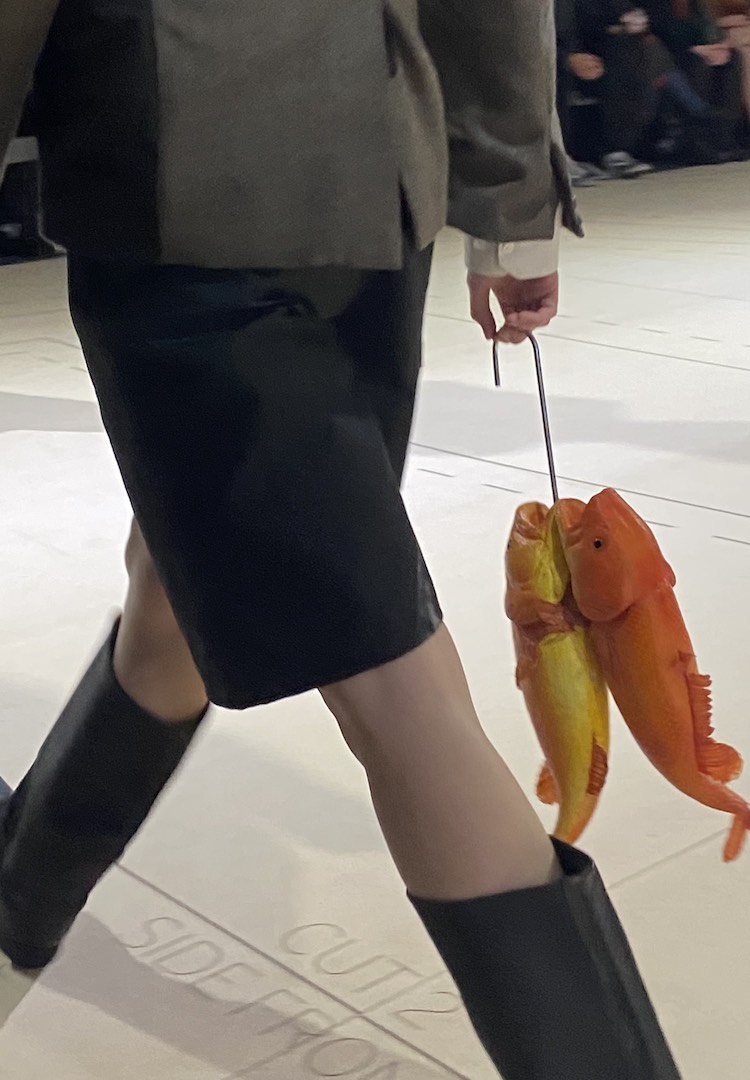
Box Hill Institute student Christine Xu’s collection Metamorphica was inspired by the ‘transformational phases of a butterfly’ which was evident in her woven cocoon-style coat made from frayed, biodegradable scraps. I love it when you can visually see recycling at the forefront of a design. The weaving of these scraps made for a colourful and textural dream. A special mention goes to the incredible bag she made to pair with her collection which featured a large buckle and trailing material (I can’t get it out of my head).
Another designer that caught my attention through their use of multiple fabric remnants was RMIT University’s Jedda Bahloo, who showed an insane colourful patchwork coat, backpack and large hat. It had colour and utilitarian structures and was beautiful to look at.

Amy Cottrell from Whitehouse Institute of Design took home the M/FW student award last night and for good reason; her designs used biodegradable and edible plastic to form otherworldly, light reflective shapes. Designed to ‘explore our relationship with a manmade substance that was once associated with progress and is now held responsible for major environmental damage’ her pieces were candy-coloured art forms. A standout was a golden structured skirt that could’ve been a chandelier and the pink plastic lace-up boots that accompanied it. Dreamy.
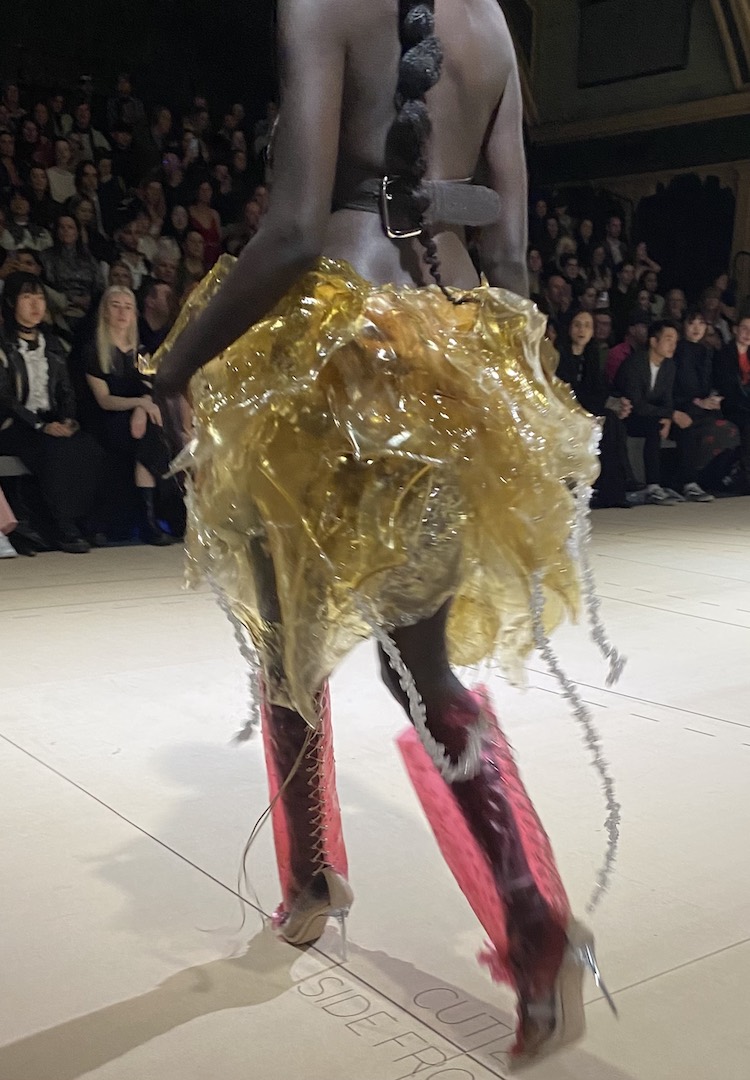
Whitehouse Institute of Design’s Genevieve De Santis was another favourite for me. Her collection High Society was about ‘merging Hollywood glamour and streetwear influences in order to better understand contemporary fashion’. This theme shone through in her maxi gown made from recycled sports jerseys – a piece I didn’t know I needed until I saw it. Sportswear is a big trend right now in streetwear and celebrity style (looking at Bella Hadid and the Balenciaga jerseys) but Genevieve’s designs have made it sustainable and unique. The patchwork jersey boots were also a cool element.
Jordan Anderson from the Whitehouse Institute of Design piqued my interest when I saw her collection was based on the seven deadly sins. What a theme! It didn’t disappoint, with models dressed in maroon and black latex and faux leathers, the highlight being a latex dress that was covered in what appeared to be bullets. The idea of clothing acting as something that protects the wearer from a dangerous world felt like a powerful statement.
This year’s show was incredible and I can’t wait to work with some of these talented designers and create a mutually beneficial stylist-designer relationship. A show like this makes me cherish the emerging talent this city has to offer.
You can explore Katherine’s styling work here.

